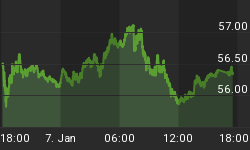12/25/2006 9:52:18 PM
Welcome a professional trader to run Dynamic Trading in 2007.
Dear Speculators,
Welcome new readers! We have a free weekly newsletter on our site where we provide free samples to our various trading services. Click here to sign up for our free weekly newsletter as we'll be publishing my trading video for free in 2007. We also offer free 4-week trials to all our services. If you have any additional questions, please feel free to email us.
We're excited to announce that we're bringing in a professional trader to the Dynamic Trading service in 2007. The move is all about independence. This will separate the DT guidance from that of the daily stock barometer.
Over the coming weeks we'll transition fully to the new author's work. We're sure you'll appreciate the added level of insight and independence that comes along with a new trader being at the helm.
Of course, if you have any additional questions, please feel free to email us.
Dynamic Trading Signals are based on a series of Oscillators tuned to the short and intermediate term movement of the market. Our goal is to trade bearish to bullish positions in line with the markets movements. Periodically we will go to cash and await the next system trade.
DYNAMIC TRADING OSCILLATOR

10/20/40 WEEK CYCLE
The following chart shows our 10/20/40 week cycles. The 40 week is also referred to as the 9-month cycle. Cycles are not short term tools for determining precise entry and exit points, they're primarily used for intermediate or longer term positioning and forecasting.

INVESTOR'S INTELLIGENCE BULL BEAR SPREAD
Each week, Investor's Intelligence polls a number of newsletter writers. The poll results in a number of bullish advisors and a number of bearish advisors. The difference between those two numbers produces the following chart. It's believed, that when a majority of newsletter writers (like us) are bullish, that the market is near a top, and vice versa. The direction of this line is as critical as the level.

EQUITY INDEX OPTION VOLUME RATIO
The market is all about risk, and there are two primary classes of participants in the market, the individual investors and the institutions. Individuals primarily trade equity options and institutions primarily trade index options. So the relationship between the two gives us an idea of how much risk the individual is willing to take on. At tops, the individual tends to take on too much risk, making this indicator rise. At bottoms, the individual is usually washed out of the market, making this indicator fall.

QQQQ v. SPY RELATIVE STRENGTH
Risk tells us a lot about the market. This indicator looks at risk from another perspective. When market participants overall increase their willingness to take on risk, it's bullish for the market. That risk shift is shown on the above chart as a shift in relative strength from the Nasdaq to the NYSE. Note when we refer to Nasdaq, we're primarily looking at the QQQQ - since that's the focus of our service. And when we say NYSE, we look at the SPY.

MONEY FLOW
This indicator looks at the flow of money in and out of various investment vehicles. For the most part, when money flow reaches an extreme, in either buying or selling, the market is at a top or a bottom, respectively.

NDX CHART

In summary:
Dynamic Trading is on a SELL SIGNAL. We're in the Rydex bear fund and will likely transition the other two trading services (QQQQ Trader & Index Options) into bearish positions to play this move lower.
Of most interest in contrast in this article is the positioning of the Money Flow indicator and the Bull Bear Ratio, where the first indicator is long term and the second indicator is longer term - it suggests that the market may have another potential push higher.
Best regards and good trading!
















